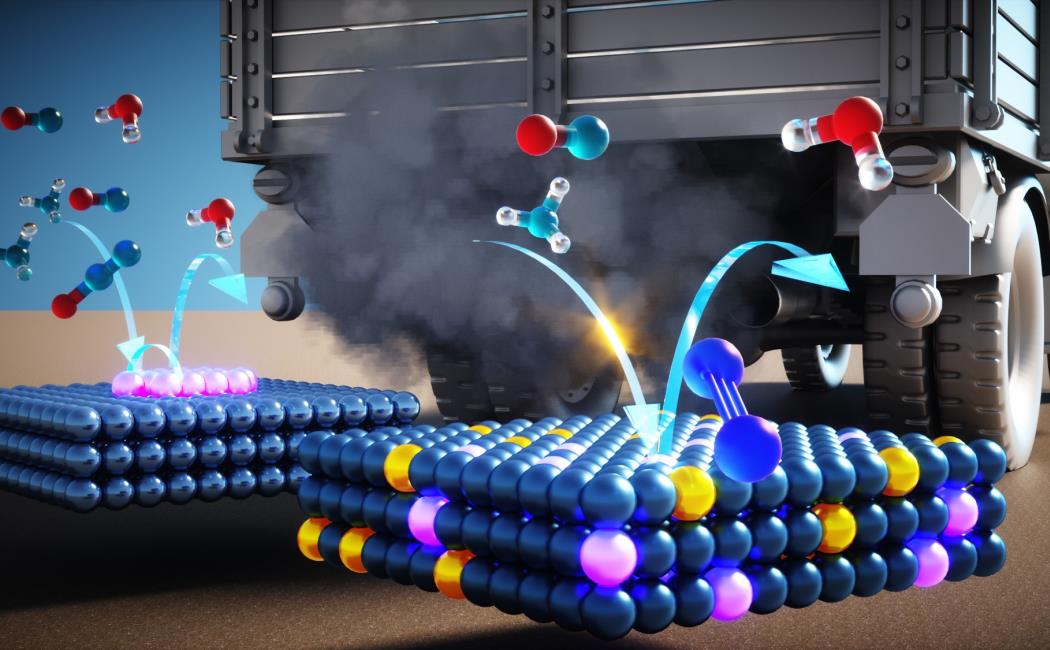

LATEST
NEWS

05 June, 2022
Smog-producing chemicals could be almost eliminated from the tailpipes of diesel cars and vans, using a new exhaust catalyst concept developed at KAUST. After systematically studying multiple catalyst compositions, the research team identified the ideal atomic recipe to catalytically remove NOx from vehicle emissions. The findings resolve an ongoing debate over additive atoms in the catalyst mix.
Recent developments in high-efficiency engine design, alongside tightening vehicle emission regulations, demand improved engine exhaust catalysts. Current-generation NOx catalysts for small diesel engines perform optimally above 200 degrees Celsius. Catalysts that operate at lower temperatures are now required. Such catalysts need to quickly remove NOx after a cold start and partner with new low-temperature combustion engines.
To develop a new generation of improved NOx catalyst, automotive emissions control company Umicore partnered with a KAUST Catalysis Center research team, led by Javier Ruiz-Martínez, to optimize the catalyst design.
“We investigated materials that are based on manganese due to their good performance and low cost,” Ruiz-Martínez explains. Manganese-based NOx catalysts have typically used cerium as a dopant, even though there was no consensus on cerium’s role in NOx removal. “The best way to develop new catalysts is by first understanding how those materials work,” Ruiz-Martínez says. So, the team produced a series of catalysts, incorporating varying amounts of cerium, to settle the debate.
Read more in KAUST Discovery.